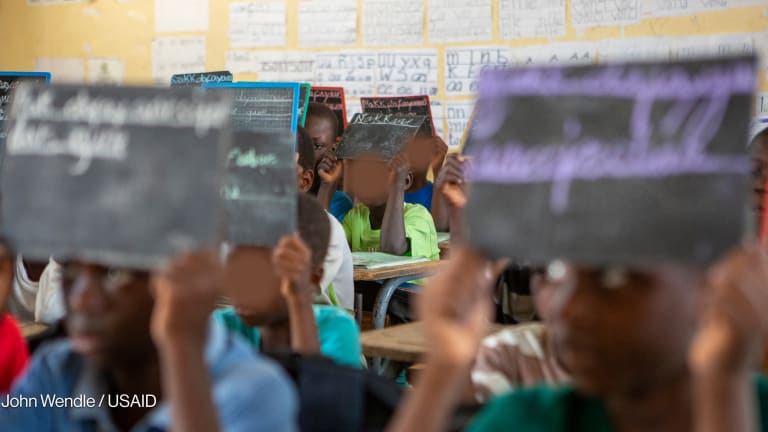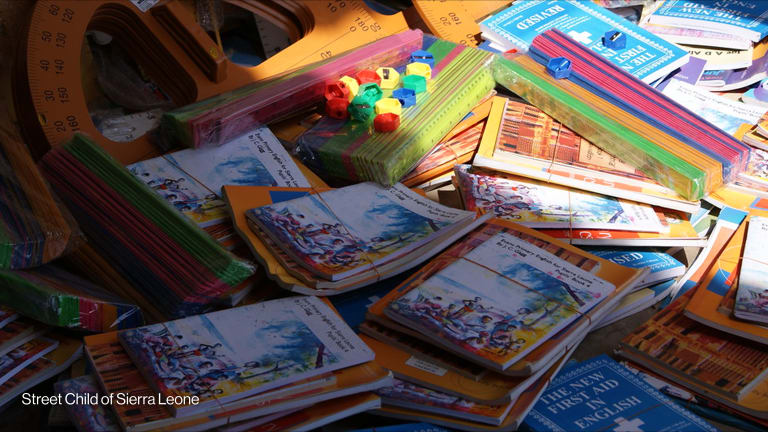
When the Millennium Development Goals expire at the end of next year, the world will have made great strides in the effort to educate more girls and boys.
Today, record numbers of children have the chance to go to school and are doing just that. In sub-Saharan Africa alone, 43 million more children were enrolled in school in 2012 than in 2002. So why is it that so many are calling for a renewed push for education?
The last 15 years have shown that education comes down to more than just a seat in the classroom. How much children learn can’t be measured only in class hours; a better measure for success is the mastery of knowledge and skills that are relevant to students’ lives.
Unfortunately, many students are being left behind in this regard.
Earlier this year, I saw educational inequity in action when I traveled to Kenya and visited two very different schools. In one, the students walked eagerly to a renovated school building with well-trained teachers, bright sunny classrooms, and ample resources. The library was fully stocked, and the teachers received regular professional development in the latest teaching techniques.
At the second school, the children were just as thirsty for education and excited to be at school. But these children were crammed into dark, over-packed classrooms that lacked the most important resource of all — well-trained teachers. This school didn’t have the resources to invest in teacher training, and most of the teachers had little or no training at all.
The reality is, while the original MDG on education has been wildly successful in increasing the number of students in classrooms, it was too narrowly designed. Gross disparities persist in how effectively classrooms actually teach students and help them learn life skills. In part, that’s because when the United Nations and other decision makers were designing the original MDGS, civil society and local experts who have the best understanding of their communities’ educational needs and challenges were all but left out of the process.
Girls, especially, have lost out as a result.
Many parents and educators recognize the extra obstacles that girls and marginalized populations like children with disabilities face — everything from stigmas about which children are worthy of an education to gender discrimination that often completely excludes children from school.
It’s hard, for example, to improve education for all girls when you aren’t also addressing child marriage, a traditional practice in many places that takes girls away from school. Millions of the poorest, most vulnerable girls are either not in school or will drop out early, despite the fact that research shows that girls’ education boosts economic growth and improves the health and well-being of families and communities.
These are the kinds of issues that civil society organizations have expertise in and why their participation in shaping the post-2015 development agenda has been so important.
CSOs have significantly more access to the United Nations and key decision makers in their own countries than they did when the MDGs were shaped almost 15 years ago. Still, CSOs need more access to key national and regional decision makers so they can genuinely shape the next round of global goals that will serve as goal posts for 15 years. I was heartened to hear U.S. President Barack Obama underline this point at the U.S.-Africa Leaders Summit, where he noted that countries that enable women and civil society to help shape their policies are stronger because of it.
Because learning levels are critical to social and economic development, education advocates around the world are pushing for a post-2015 set of goals that includes both equitable access to schools (for all) and quality learning.
To their credit, global decision makers seem to have woken up to some extent and realized what’s been missing. The U.N. Open Working Group recently recommended that in the next set of global development goals, U.N. member states and the world body work to “ensure inclusive and equitable quality education and promote life-long learning opportunities for all”.
This shift in focus is encouraging, but there is still work to be done before a goal is set. Next month, when country leaders sit down to debate the next global development goals, CSOs should also be at the table. Anything less risks another set of goals that fails to reflect the real-world needs of girls, boys, women and men around the globe.
Aug. 18, 2014, marks the 500-day milestone until the target date to achieve the Millennium Development Goals. Join Devex, in partnership with the United Nations Foundation, to raise awareness of the progress made through the MDGs and to rally to continue the momentum. Check out our Storify page and tweet us using #MDGmomentum.








